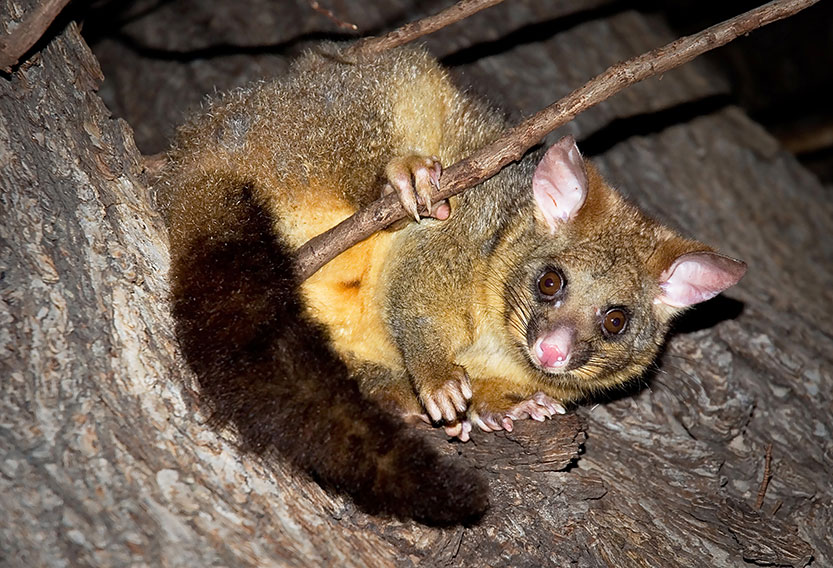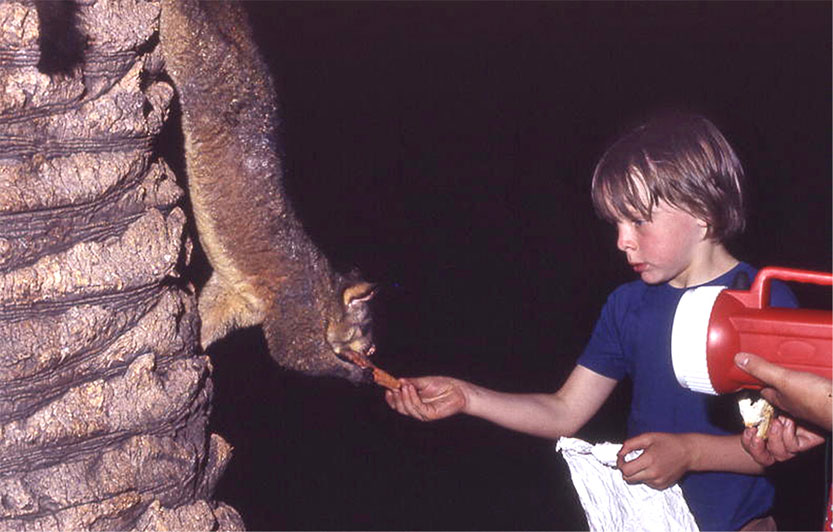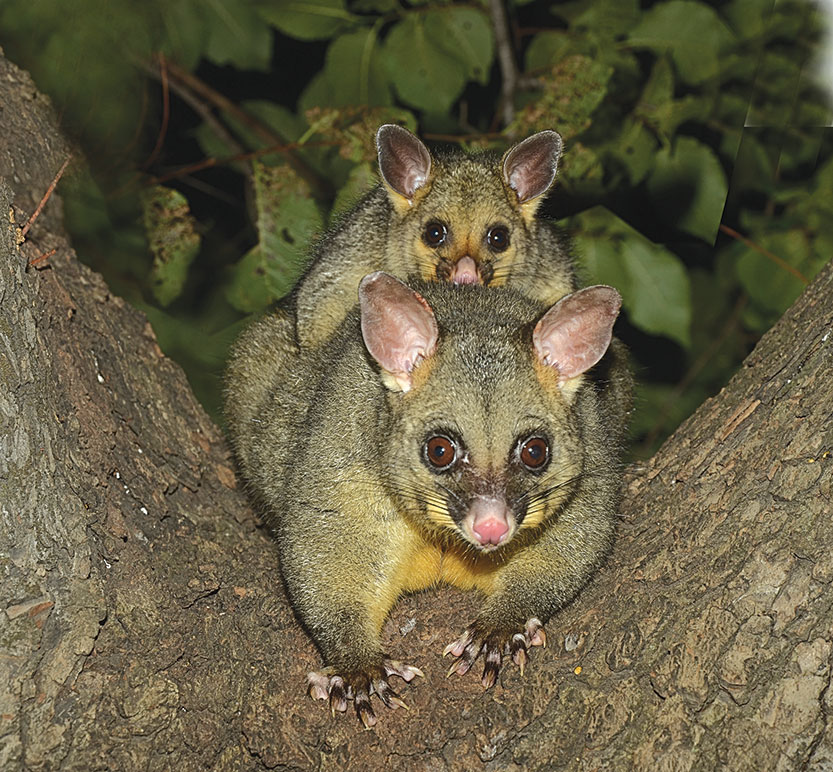Hello possums
It’s not as common as it once was to be woken in the night by the thumping of possums running across the roof, the raucous guttural sounds of their territorial squabbles destroying our dreams and shaping our nights.
Nor do we now sneak off down to the Flagstaff Gardens after dinner seeking out those shining eyes peering expectantly down at us from gnarled trunks, tiny pink noses twitching expectantly at the aroma of the chopped apple and sliced bread held eagerly in the brown paper bag in one hand, torch and enticing morsel stretched out in the other.
Squeals of delight would ring through the park as each new furry critter was discovered. Alas, no more.
It’s not as if their numbers have dwindled though disease (as in the case of the Tasmanian Devil) or been hunted to extinction by men, foxes and feral cats (such as bilbies and bandicoots). It’s partly bureaucracy and a case of fellas felling trees. Show me a tree and I’ll show you a possum. Show me less trees and…
Melbourne is a city blessed with its greenery but, of course, there’s always that balancing act to consider, the one where we must decide as to our priorities.
Tradition has seen our parks and streets dominated by exotic tree species, particularly elms (our avenues of elms the most majestic in the world today, those overseas ravaged by Dutch Elm disease) and our hungry possums are rather partial to a nice tender young sprig of elm for breakfast (not to mention lunch, dinner and supper) and so it’s possums versus elms, with the elms coming out on top.
To prevent possums settling in the trees metal bands have been placed around the trunks and these have been largely effective, however, possums are clever little critters and I have been delighted to see their ingenuity in action on many occasions.
Not only are they accomplished contortionists, sometimes actually squeezing between the metal and the trunk to gain access to their hollow above, but they are top tightrope walkers as well, cheekily running along electricity wires from one tree to another.
I do admire the elms, but I must confess I feel a warm glow when I see these mischievous examples of beating the system by those cheeky possums.
And so, what are these possums exactly? Australia has a number of species (Victoria’s state fauna emblem being the endangered Leadbeater’s possum), and probably our most ubiquitous marsupial is the aptly named common brushtail (Trichosurus vulpecula to be precise), those which once filled our parks but have been banished to who knows where?
Not as well-known as his smaller cousin the ringtail (with pointy nose, bulging eyes and that famous prehensile tail, and probably the one attacking your apricot tree each night), or as cute as the pygmy possum which fits comfortably in a child’s hand, the brushy is larger than a cat and built like the Hulk, its tail possessing great potential if Davy Crocket hats ever come back into style.
Possessing two opposing fingers or toes allows for excellent gripping of branches, you could call the brushy the Tarzan of the bush as it swings effortlessly, if noisily, through the trees. Although considered a pest in the city and suburbs (and in New Zealand where as an illegal immigrant it is devastating their forests) it is actually quite an asset in our bushland, delighting in eating the parasitic mistletoe which would otherwise decimate our eucalypts.
Like koalas, possums are fairly harmless creatures, but their claws can be quite damaging. One brushy we rescued as a tiny shivering hairless baby after falling from one of those mammoth palms in the Flagstaff Gardens grew to be a typical ravenous teenager before we deposited him out in our peach tree in the backyard. In the meantime, “Poss” as we called him, used us as his tree, the summer months with us at the time seeing us in shorts. My legs still bear the scars – and he was never satisfied until he was sitting on our heads.
Brushtails bearing pink noses and long whiskers are usually grey, brown in colour, although I’ve seen a number of rufus types bearing a strong orange tinge, and like all marsupials, females carry their young in a pouch. There are usually only one or two offspring which, tiny when born, gravitate to the mother’s pouch where they remain as snug as a bug in a rug for 120 days or so before graduating to riding on Mum’s back.
After a further four to six months of this onerous parenting, they become too large and heavy to be carried around and are encouraged to leave home and get a job. Sound familiar?
Award-winning photographer Howard Birnstihl has lived and worked in North Melbourne for the past 45 years. Spending much of his time photographing in the bush, collecting a huge image file of native flora and fauna, he has also found a surprising amount of wildlife in the inner suburbs. Developing an interest in writing, he has published a couple of successful novels, as well as many articles on Australian nature and architecture •

The Movement Refinery: 20 years and still going strong






 Download the Latest Edition
Download the Latest Edition